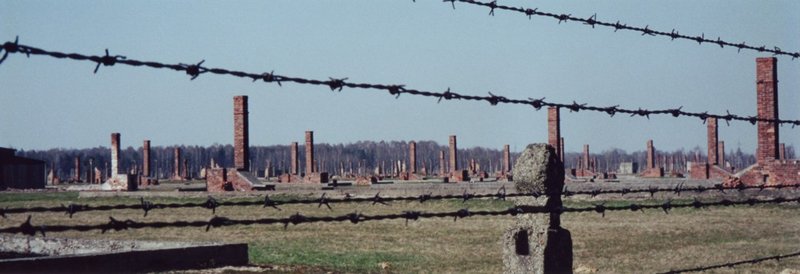
On 27th of January 1945, the Red Army entered Auschwitz Concentration Camp and freed the remaining 7,000 inmates. The Soviet soldiers couldn't believe their eyes when they saw the dying inmates struggling to stand up and walk out of their prison cells.
In total, more than 1.3 million people were captives in Auschwitz, while at least 1.1 million of them died. Approximately 900,000 died almost immediately after they arrived at the concentration camp, while another 200,000 were either killed or died because of diseases, malnutrition, severe abuse, or due to the consequences of horrific medical experiments.

Apart from corpses, about 3,800 bags, 100,000 pairs of shoes, and 6.5 tons of human hair were recorded. The Nazis' brutality was limitless.

The most common ways of killing the inmates were by poisoning them in gas chambers, lethal injection, hanging, and starvation, as well as executions with firearms.
The persecution of Jews began in 1933 in Germany. Auschwitz was a concentration camp in southern Poland built by Heinrich Himmler in June 1940. It was the largest concentration camp in Nazi Germany (40 square kilometers). It had three main and 39 secondary camps. The main ones were Auschwitz I, where about 70,000 people were killed (mostly Polish intellectuals and Soviet prisoners of war), Auschwitz II-Birkenau, where about one million people were killed (mainly Jews, Sinti, and Roma), and Auschwitz III-Monowitz that was mostly a labor camp.

Around one in six Jews who was killed during the Holocaust died in Auschwitz. By nation, the biggest number of Auschwitz's Jewish victims originated from Hungary (430,000 deaths), followed by Poland (300,000 deaths), France (69,000 deaths), Netherlands (60,000 deaths), Greece (55,000 deaths), Protectorate of Bohemia and Moravia (46,000 deaths), Slovakia (27,000 deaths), Belgium (25,000 deaths), Germany and Austria (23,000 deaths), Yugoslavia (10,000 deaths), Italy (7,500 deaths), Norway (690 deaths), and others (34,000 deaths), according to Wikipedia.

On July 2nd, 1947, the Polish government passed a law that established a state memorial to commemorate "the martyrdom of the Polish nation and other nations in Oswiecim." In 1979, UNESCO added the camp to its list of World Heritage Sites. Until 1990, all the museum's directors were former Auschwitz prisoners. Visitors to the site increased from 492,500 in 2001, to more than one million in 2009, and two million in 2016.












COMMENTS